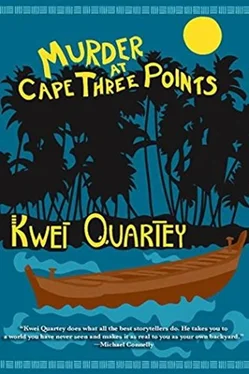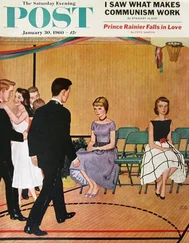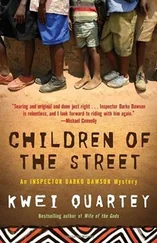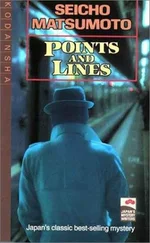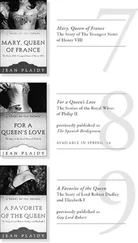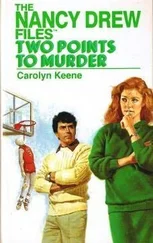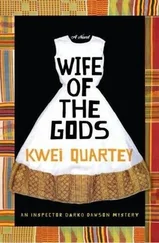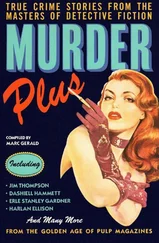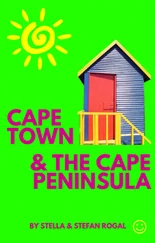He lifted the tap handle and after a cough and splutter, water began flowing.
“This is nice,” Dawson said, looking around. “It will be beautiful when it’s finished.”
“Thanks,” Abraham said, smiling.
They went on into the small dining area, which was bare except for three boxes of unpacked materials in one corner. The recessed ceiling lights were in working order and missing only their trim.
“I will bring a table and two chairs for you to sit down and eat on,” Abraham said.
“Don’t worry about that, cousin Abe,” Dawson said. “I can do without.”
“It’s no problem. I’ll get them tomorrow.”
The bedroom contained a wardrobe and a narrow bed.
Abraham snapped his fingers. “Oh, I forgot curtains for the window. I’ll bring some tomorrow as well.”
“The house is in better shape than I thought it was going to be,” Dawson commented in appreciation. “I was imagining just the wood frame.”
Abraham laughed. “No, not as bad as that. Are you okay with it? Sorry I don’t have the AC connected yet.”
“No worries at all. I appreciate this very much.”
“Call me if you need anything-even tonight. I don’t mind.”
Once Abraham had left, Dawson hung his clothes up in the wardrobe and then remembered what he had meant to do earlier. Sly had unwittingly given him an idea about how witchcraft might have some connection to the Smith-Aidoos’ murder.
Dr. Allen Botswe, a professor at the University of Ghana, specialized in African criminal psychology. His landmark book, Magic, Murder, and Madness: Ritual Killing in West Africa , was the authoritative text on the relationship between homicide and traditional West African culture, particularly in Ghana. Botswe had helped Dawson out during his last case.
He dialed the professor’s number, but no one answered. He redialed, a trick that often worked, and this time Botswe picked up.
“Mr. Dawson! How nice to hear from you. I hope all is well?”
“Yes, thank you, Doctor.” He got down to business. “I’m investigating a case in Takoradi of a murdered man and his wife who ended up in a canoe out by an oil rig.”
“The Smith-Aidoos-the man who was decapitated?”
“You know about it?”
“Only the bare elements.”
Dawson summarized the most important points. “My older son,” he continued, “who accidentally saw the photograph of the severed head said he believed witchcraft or juju was involved.”
“Possibly. Could I see the photograph?”
“I’ll text it to you. Please call me back once you’ve had a chance to look at it.”
“Yes, of course.”
Dawson opened up the docket, took the clearest possible picture of the severed head with his mobile, and sent the image to Botswe, who called back a few minutes later.
“Gruesome,” the professor said. “Some of the features here suggest a ritual killing, which is a murder committed in connection with the powers of gods, spirits, or ancestors. That often involves taking the victim’s head, eyes, lips, tongue, breasts, genitals, or internal organs. Sometimes the blood may be drained as well. The sacrifice victim is often selected for his or her perceived purity or unspoiled nature-a child, or a virgin, for example. In that regard, Charles Smith-Aidoo doesn’t quite fit the bill, but it still doesn’t rule out a bloody ritual. Were any other body parts missing?”
“No, but I should have told you that an old pocket watch was found stuffed in his mouth with the scrawled inscription, ‘blood runs deep.’ ”
“Aha,” Botswe said, his tone changing from interested to intrigued. “Fascinating. The murderer might have been trying to invoke family ties, the old watch indicating generations past, maybe a vendetta, something terrible done to his family member or members, or to an ancestor. He is deeply embittered and vengeful. A human sacrifice aspect could be separate but related to the family issue. My feeling is you should look very closely at the Smith-Aidoos’ family history, or one tied up with theirs-specifically ancestral tragedies or murders. When you do that, you may find the answer to this killing.”
“Thank you, Prof. You have really helped.”
“You are most welcome, Inspector,” he said, smiling with his voice. “Please, do keep me posted.”
As he hung up, Dawson reflected on what Botswe had said: something terrible done to his family member or members. Is that where Jason Sarbah came in? Did he blame Charles and Fiona for Angela’s death and kill the couple for revenge?
Dead tired, Dawson took a cold shower, brushed his teeth, and fell into bed. In the morning, he would meet with Superintendent Hammond with a fresh mind.
DAWSON SAW THE neighborhood for the first time by the light of day as he emerged from the lodge. It had rained overnight, which surprised him because he hadn’t heard anything and rain usually woke him up. It proved how tired he must have been. He locked the front gate behind him. Across the street was Stellar Lodge, a white, two-story hotel with a brand new extension. Business must be good , Dawson thought, although he recalled that the place had had some adverse publicity about a year ago after a hotel guest had been apparently electrocuted in the shower. Dawson wondered how one could engineer a murder that way. Not as gruesome as his present case, but certainly not a pleasant way to die.
He observed several 4×4 SUVs parked in front of the hotel. One pulled out with its Ghanaian driver at the wheel and a white man in the rear-probably an oil engineer.
He decided to take a short walk before hailing a cab so that he could get a good sense of the neighborhood. Within a ball’s throw of the lodge, young soccer players were performing their early morning drills on a large green playing field that belonged to Hassacas, a local soccer team. He caught a slightly smoky scent to the air-someone cooking on firewood somewhere, but he couldn’t tell from which direction. He passed a petrol station to the left, and a little farther along, a strip mall with a clothing store, a jewelry boutique, and a barbershop.
The morning had started out cool but had warmed up considerably by the time he arrived at Shippers Circle, a neat roundabout that Malgam Oil had recently refurbished. Taxis were ubiquitous in Takoradi; Dawson got one in seconds with barely a gesture. The driver, a bone-lanky man whose name was Baah, looked like he was eighteen but he assured Dawson he was twenty-four.
“How long have you lived here?” Dawson asked him.
“Since I born,” Baah said, with a broad smile marred by crooked teeth. He added that he had only been out of Takoradi once in his life. His knowledge of the city and his love for it were obvious as he pointed out landmarks. Just beyond Paa Grant roundabout, he gestured to a thickly wooded area on their right.
“Dis place be Monkey Hill,” he said.
“Why is it called that?” Dawson asked.
“Because plenty monkey dey.” Baah said with a laugh. “They make sanctuary for them and plenty birds too. We should go there?”
“Okay, but later,” Dawson said.
They passed a wetland area with a patchwork of glistening pools, woody plants, and swamp grass on either side of the road, and then Effia-Nkwanta Hospital, where Dr. Smith-Aidoo and her father had identified the bodies of her uncle and aunt. Next in quick succession were the high court, the men’s and women’s Sekondi prisons, and the pale green Sekondi Takoradi Metropolitan Assembly (STMA) building.
They turned in at a sign reading GHANA POLICE SERVICE, REGIONAL HEADQUARTERS, SEKONDI. SERVICE WITH INTEGRITY, and climbed a steep incline to a two-story pale yellow building with the signature GPS blue trim. The hill on which it stood gave a fine view past the corrugated metal roofs of old Sekondi to the blue Atlantic Ocean, the fishing harbor, and the naval base.
Читать дальше
